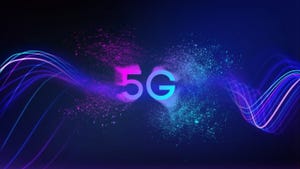Mastercard and IOH prototype shows off in-vehicle payment systemMastercard and IOH prototype shows off in-vehicle payment system
Mastercard and Indosat Ooredoo Hutchison have launched a prototype to demonstrate the former's in-vehicle payments solution that enables drivers to make transactions directly from a vehicle’s dashboard.
October 22, 2024

The idea is Mastercard’s in-vehicle payments solution allows drivers to pay for fuel, tolls, EV charging or drive-through orders from the dashboard by enabling them to store payment credentials in the car’s infotainment system, and then authenticate payments via fingerprint ID.
For the prototype this has been paired with Indonesian operator Indosat’s AI-powered fleet management system called NEXTFleet, which is supposed to let companies plan, schedule, and monitor fleets in real-time through mobile applications and IoT devices.
The initiative seeks to ‘explore ways to enhance driver experiences and improve operational efficiency for fleet operators and public transportation authorities’, we’re told, and ultimately is pitched at automotive manufacturers that might want to kit out their latest models with such bells and whistles.
“At Indosat Ooredoo Hutchison, we are dedicated to leveraging AI and innovative technologies to revolutionize urban mobility in Indonesia,” said Vikram Sinha, President Director and Chief Executive Officer of Indosat Ooredoo Hutchison (pictured in the driver’s seat above). “This collaboration with Mastercard highlights our ambition to become AI TechCo, reflecting our larger purpose of empowering Indonesia through smarter, more efficient solutions that enhance the quality of life for every Indonesian.”
Aileen Goh, Country Manager and President Director, PT Mastercard Indonesia added: “Mastercard is committed to driving innovation in various sectors globally, including digital payments, sustainability, cybersecurity and tourism. Mastercard’s work on mobility-as-a-service and in-vehicle payment solutions globally is part of a broader effort to explore cutting-edge technologies in collaboration with industry leaders.
“Through this collaboration with Indosat Ooredoo Hutchison, we are showcasing the possibilities that could unfold when innovation, mobility and commerce come together, and what the future holds with more connected, efficient, and sustainable urban mobility ecosystems in Indonesia.”
The potential use cases of in-vehicle payments solutions and AI-powered fleet management systems are ‘countless’ we’re told in the release, which seems a bit of a stretch. You can see what’s being described as being handy in some situations, but there aren’t a ton of areas beyond the provided examples of paying for fuel, tolls, and a cheeky drive through latte that immediately spring to mind.
And regards to paying for fuel, presumably you’d still have to get out of the car and work the pump/EV charger. Much like when consumer electronic firms try to pitch things like smart washing machines – which you can control from an app but which will still require you to physically go to the machine and fill it with clothes – the labour saved in this case seems somewhat negligible assuming you are already in a pay-at-pump situation.
Still, it’s the sort of thing that would do some work in the marketing of high end new cars, and it’s just a prototype, so we’ll have to see how the idea of in-vehicle payments evolves.
About the Author
You May Also Like










.png?width=300&auto=webp&quality=80&disable=upscale)


_1.jpg?width=300&auto=webp&quality=80&disable=upscale)